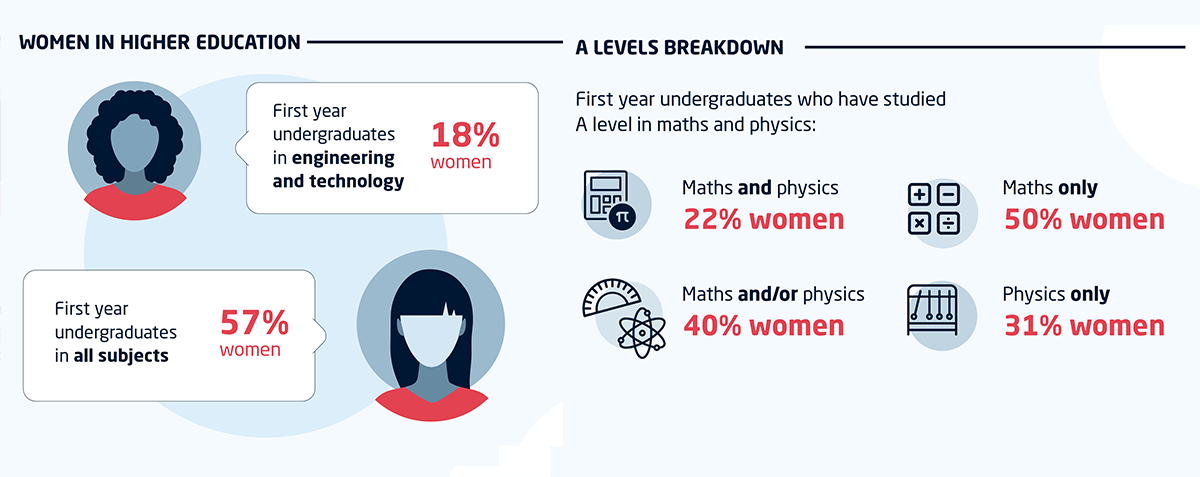
Higher education
Graduate outcomes - Engineering and technology
Published in March 2024, our report 'Graduate outcomes - Engineering and technology' uses the latest data from the Higher Education Statistics Agency (HESA) to explore engineering and technology graduates’ activity, 15 months on from graduation.
This report looks at who graduated with an engineering and technology degree, how many are employed and what jobs they are going into, and how relevant their qualification was to their job.
Key findings
- Engineering and technology graduates are more likely to be in work than graduates in other subjects
- Over two-thirds of engineering and technology graduates went on to work in engineering and technology jobs, but this is higher for men than women
- Graduates working in engineering and technology roles are earning more than graduates in other jobs
- Engineering and technology graduates are more likely to think their degree was relevant to their job, and to feel “on track” with plans for the future
- Women, those from a lower socio-economic background, and Black/Black British (Caribbean) young people continue to be underrepresented in engineering and technology degrees
Engineering in higher education
Published in March 2023, our report 'Engineering in higher education' explores the number, characteristics and outcomes of engineering and technology students in higher education (HE) in the UK. Based on the 2020/21 data from the Higher Education Statistics Agency (HESA), the report also compares the data for engineering and technology students alongside that of students studying on HE courses overall.
The report also breaks down the numbers and characteristics of students within 7 principal specialisms of engineering (which are available as standalone inserts). This includes:
- Mechanical engineering
- Electrical and electronic engineering
- General engineering
- Civil engineering
- Aeronautical and aerospace engineering
- Chemical, process and energy engineering
- Production and manufacturing engineering

Download the report infographic
Download the 'Engineering in higher education' report
From A levels to engineering. Exploring the gender gap in higher education
In engineering, women are in the minority at just 16.5% of the workforce in 2021. In fact, gender disparity is seen throughout all educational pathways into engineering.
Published in February 2023, this report explores how many more girls would need to study mathematics and/or physics at A level to increase the numbers of women studying engineering in higher education to the same level as men. We do this by exploring the conversion rates from A level to engineering and technology degrees for first year undergraduate students by gender, with the aim of estimating the additional numbers needed per year.

